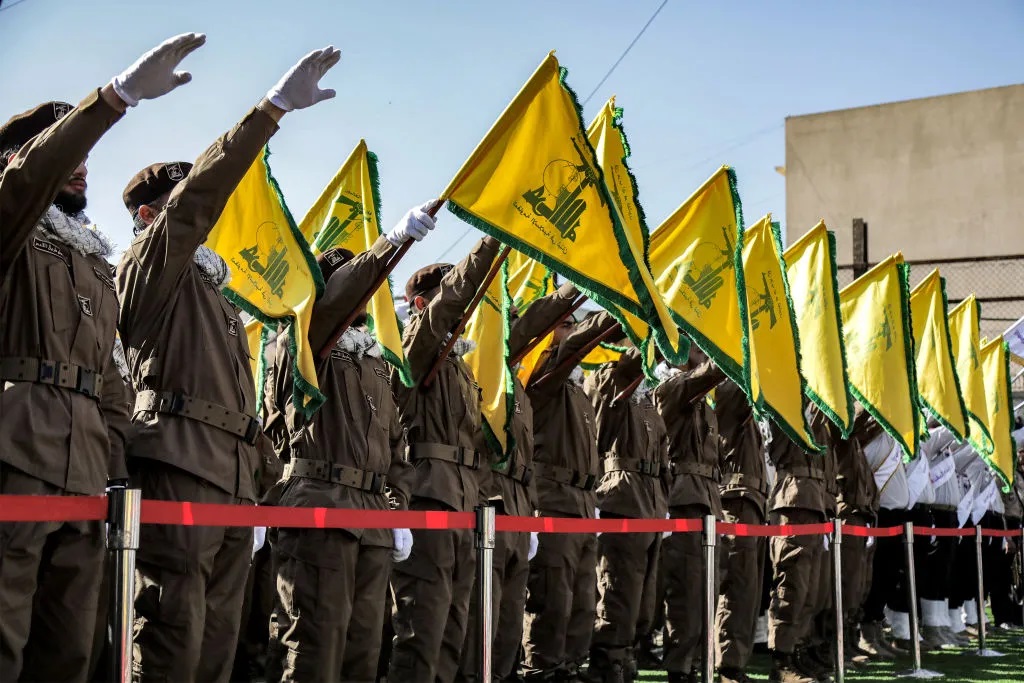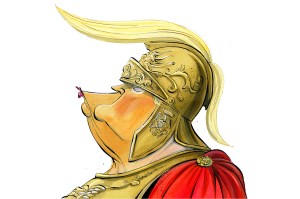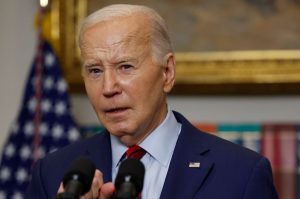On Tuesday, Hezbollah launched its deepest attack into Israel since the current round of hostilities between Jerusalem and the Iran-supported Islamist group began lat October. Sirens sounded in the town of Acre as drones and rockets were launched at what pro-Hezbollah media described as “military targets” between Acre and Nahariya. There were no casualties. In response, Israeli aircraft struck at Hezbollah targets across the border.
Hezbollah’s decision to strike further south appear to have come in response to the targeted killing by Israel of one of the movement’s senior commanders the previous day. Mohammed Khalil Atiyeh, a senior member of the organization’s elite Radwan Force from the village of Sarfand in southern Lebanon, was killed in a targeted attack in the Arsoun area, on the night of April 22.
The only realistic prospect for changing this situation would be an Israeli military operation over the border
Atiyeh, described in the death notice issued by Hezbollah as a “martyr jihadi” killed “on the road to Jerusalem,” was the 287th Hezbollah member acknowledged by the movement to have died since 8 October. A second notable operative, Hussein Azkol, was killed on Tuesday morning in an IDF attack on Adlon, a village close to the border. Azkol was described in an IDF statement following his killing as “a significant terrorist operative in Hezbollah’s Aerial Defense Unit.” Hezbollah’s own announcement depicted the slain fighter in identical terms to those used for Atiyeh. Azkol is the 288th Hezbollah man to merit such terms since October.
The details of the latest exchange of fire cast considerable light on the current state of the situation between Israel and its Lebanese enemy. On the one hand, tactically, Israel can derive a certain satisfaction from the daily dynamic. Hezbollah is being significantly bled, hemorrhaging senior and experienced operators.
Compare the figures: in the three-week war between Israel and Hezbollah in the summer of 2006, Hezbollah admitted to losing 250 fighters (both Israel and the UN put the number much higher). The IDF lost 121 killed in that war. This time around, fifteen IDF soldiers have been killed, to Hezbollah’s 288.
The notable difference in the body count has resulted, incidentally, in the birth and rapid proliferation of a conspiracy theory on the Hezbollah/Lebanese side, in which Israel is deliberately concealing the real, much higher, death toll among its personnel. Khalil Nasrallah, writing at the English-language, pro-Hezbollah website The Cradle in late March, for example, asserted: “Since October 8, more than 230 Israeli soldiers have been killed by Hezbollah fighters in cross-border operations against the occupation state.”
Nasrallah attributed this figure to “field data” obtained by The Cradle, and went on to accuse Israel of “masking the true extent of its losses.” In a country in which so many serve, and the national sport is talking, the idea of such a concealment is ludicrous.
Conspiracy theories aside, the wider story is considerably less heartening from the Israeli point of view.
Israel’s northern border is effectively shut down to a depth of three miles from the borderline — the low casualty figures among civilians are because the civilian population has largely moved further south, becoming refugees in their own country. This is a situation unprecedented in Israel’s history.
Around 65,000 people have left their homes. Before October 2023, Hezbollah fighters would patrol in the open on the other side of the border fence, sometimes just feet from Israeli civilian homes. With the October 7 massacres foremost in everyone’s minds, residents of Israel’s north want guarantees that this situation will not return once the current round of fighting ceases. Some 100,000 Lebanese have left their own homes on the other side of the border. American diplomatic efforts to achieve some change in border arrangements are stymied. Hezbollah is the effective ruler of Lebanon, and apparently sees no reason for flexibility in this regard.
The only realistic prospect for changing this situation would be an Israeli military operation over the border to move Hezbollah’s fighters north. But with fighting in Gaza continuing, and with the US administration apparently determined to avoid further escalation, it is not clear if Israel’s leadership will find itself able to order such an operation.
Regionally, the situation becomes less encouraging again. Hezbollah is a creation and instrument of Iran. Teheran, which since April 13 is an active participant in this war but which has been operating its clients and proxies from the beginning, currently maintains control or freedom of operation in the entire area of territory between Israel’s border with Lebanon, and the Iraq-Iran border. This is a vast body of land, taking in the areas of three broken Arab states in which Iran is now the primary actor — Lebanon, Syria and Iraq. In this area, Teheran has established semi-regular Shia, Islamist, client, military forces.
So while Israel may draw some satisfaction from its attrition rate against Lebanese Hezbollah, the situation in the north is to Iran’s advantage. It will remain so unless — until — Jerusalem can find a solution that removes Hezbollah from the border area.
This article was originally published on The Spectator’s UK website.


















